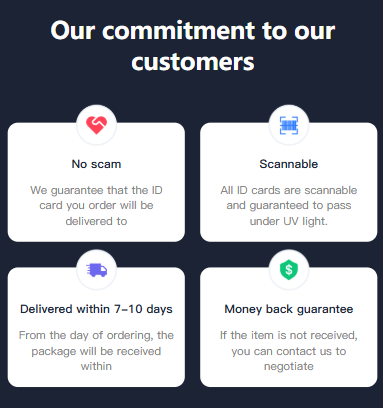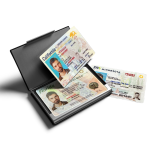Securing a Real ID is a critical step for domestic air travel and accessing federal facilities post-2025. While the process is necessary, delays often stem from missing documents, appointment backlogs, or avoidable errors. This guide breaks down actionable strategies to streamline your application, ensuring you meet deadlines without unnecessary stress.
1. Understand the Basics Before You Start
Real ID requirements vary slightly by state, but core documentation remains consistent. Familiarizing yourself with these basics upfront prevents last-minute scrambling. The U.S. Department of Homeland Security (DHS) mandates four document categories:
- Proof of Identity: A valid, unexpired U.S. passport, certified birth certificate (issued by a state/county), or permanent resident card.
- Social Security Number (SSN): Original Social Security card, W-2 form, or pay stub with full SSN.
- Proof of Residency: Two documents showing your current address, such as a utility bill (dated within 60 days), lease agreement, or bank statement.
- Legal Status: If your identity document doesn’t confirm U.S. citizenship (e.g., a passport), provide a document like a Certificate of Naturalization or Employment Authorization Card.
Visit your state’s DMV website first to confirm local rules. For example, Arizona requires two residency proofs, while California accepts a rental agreement and a cable bill. Overlooking state-specific nuances is a top cause of application delays.
2. Gather Documents in Advance (and Verify Their Validity)
Start collecting documents 4–6 weeks before your appointment. Common pitfalls include:
- Expired Documents: A birth certificate doesn’t expire, but a passport used as ID must be valid. If yours is expired, use a certified birth certificate instead.
- Notarized Copies: DMVs rarely accept notarized copies of birth certificates or passports. Always bring originals or certified copies from the issuing agency.
- Name Mismatches: If your current name differs from documents (e.g., due to marriage), include legal proof like a marriage certificate or court order.
Pro Tip: Create a checklist and scan copies of all documents. If originals are lost, request replacements early—vital records offices can take 2–4 weeks to process requests.

3. Schedule an Appointment Strategically
Walk-ins are unpredictable; most states require appointments for Real ID applications. Here’s how to secure a slot quickly:
- Check Online First: Use your state’s DMV online portal to view available times. Some systems update hourly—check early morning or late evening for cancellations.
- Target Off-Peak Days: Mid-week mornings (Tuesday–Thursday, 8–10 AM) often have more availability than weekends or afternoons.
- Try Multiple Locations: Smaller, suburban DMVs may have shorter wait times than urban ones. Use your state’s “branch locator” tool to compare wait times.
Example: In Florida, the DMV’s “Now” app lets users join a virtual queue, reducing in-person wait times. Similar tools exist in Texas (“Texas Department of Public Safety”) and New York (“NY DMV Wait Time” tool).
4. Avoid Common Application Errors
Even with correct documents, errors during submission can cause delays. Here’s how to stay on track:
- Double-Check Forms: Fill out application forms online before your appointment (if available). Typos in names or addresses trigger reviews.
- Clarify Unclear Documents: If a utility bill lists a roommate’s name, ask the provider to add your name to the account or use a different document (e.g., a bank statement with your address).
- Bring Payment Ready: Fees range from $30–$50. Cash, credit cards, or checks are usually accepted—confirm with your DMV to avoid last-minute payment issues.
5. Follow Up After Submission
After your appointment, the DMV processes applications in 10–30 days. To track progress:
- Use Online Tools: States like California and Illinois offer “Track My ID” portals. Enter your application number for status updates.
- Contact the DMV Directly: If 30 days pass with no ID, call using the number on your receipt. Have your application number and a copy of submitted documents ready to speed up inquiries.
- Address Delays Proactively: If the DMV requests additional info, respond within 7 days. Delayed responses reset processing timelines.
Common Problems and Solutions
Even with careful planning, hiccups can occur. Below are five frequent issues and how to resolve them quickly:
Problem 1: Missing a Required Document
Scenario: You arrive at the DMV only to realize you forgot your Social Security card.
Solution: Ask the agent if a substitute is acceptable (e.g., a W-2 or pay stub with your full SSN). If not, reschedule the appointment immediately. Use the DMV’s online portal to book the next available slot—don’t wait to call, as slots fill fast.
Problem 2: All Appointment Slots Are Booked
Scenario: Your state’s DMV portal shows no available appointments for 6 weeks.
Solution: Check smaller, less busy branches. For example, in Pennsylvania, rural DMVs often have open slots when urban ones are full. Alternatively, sign up for appointment alerts—some states notify users when cancellations occur.

Problem 3: Name Mismatch on Documents
Scenario: Your birth certificate lists “Mary Smith,” but your driver’s license and utility bills use “Mary Johnson” (post-marriage).
Solution: Bring your marriage certificate to link the names. If you changed your name via court order, include the official document. The DMV will update your Real ID to match the current name once proof is provided.
Problem 4: Application Rejected for “Incomplete Information”
Scenario: You receive a rejection letter stating your application is incomplete, but you’re unsure why.
Solution: Call the DMV’s support line and request a detailed explanation. Most rejections stem from unclear residency proofs (e.g., a utility bill with a PO box) or expired IDs. Correct the issue and resubmit—attach a note explaining the fix to expedite review.
Problem 5: Long Wait Time After Submission
Scenario: It’s been 40 days since your appointment, and you still haven’t received your Real ID.
Solution: Contact the DMV with your application number and a copy of your submission receipt. If processing is delayed due to a backlog, ask if you can pick up the ID in person (some states offer this option for urgent cases). Follow up weekly until resolved.


